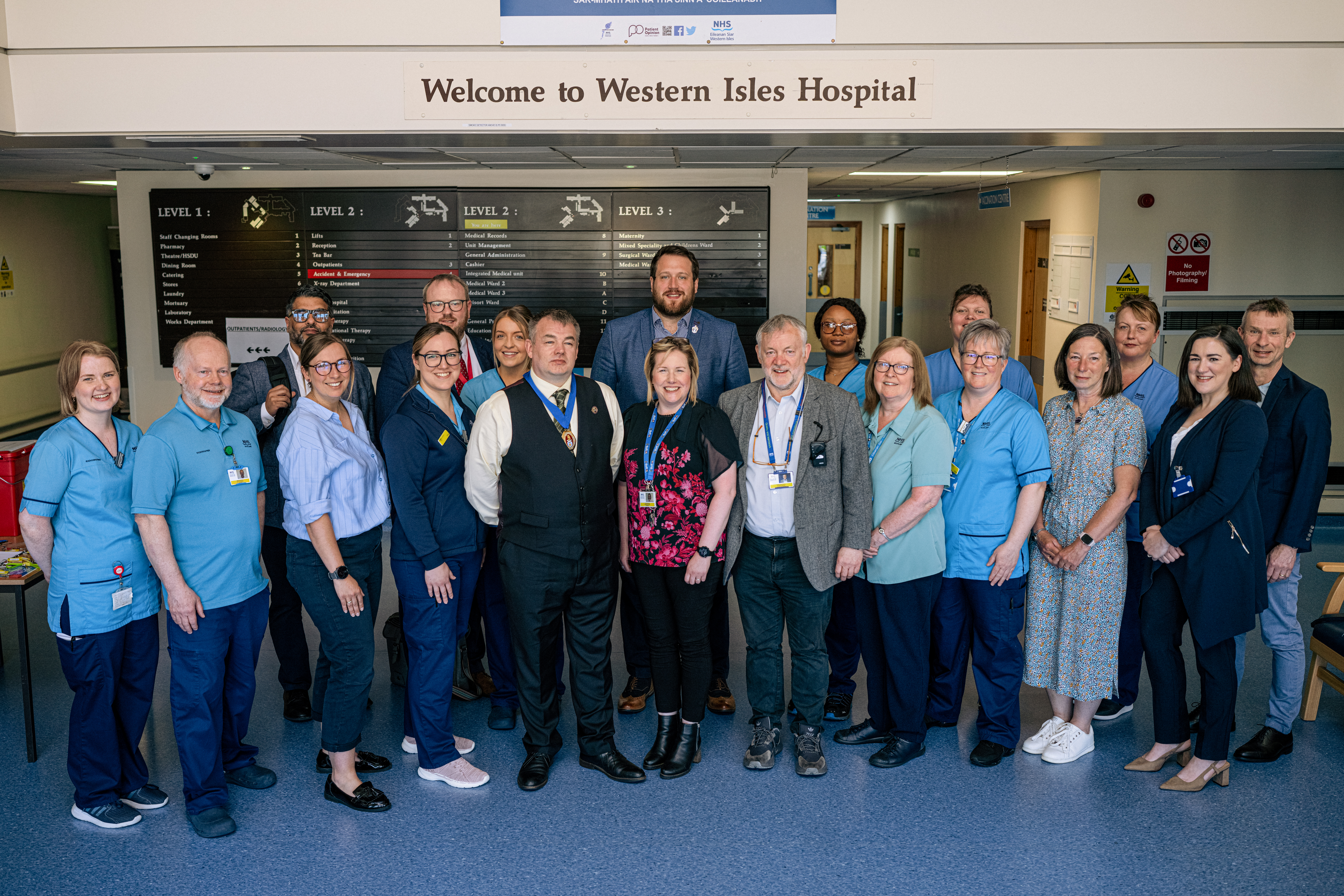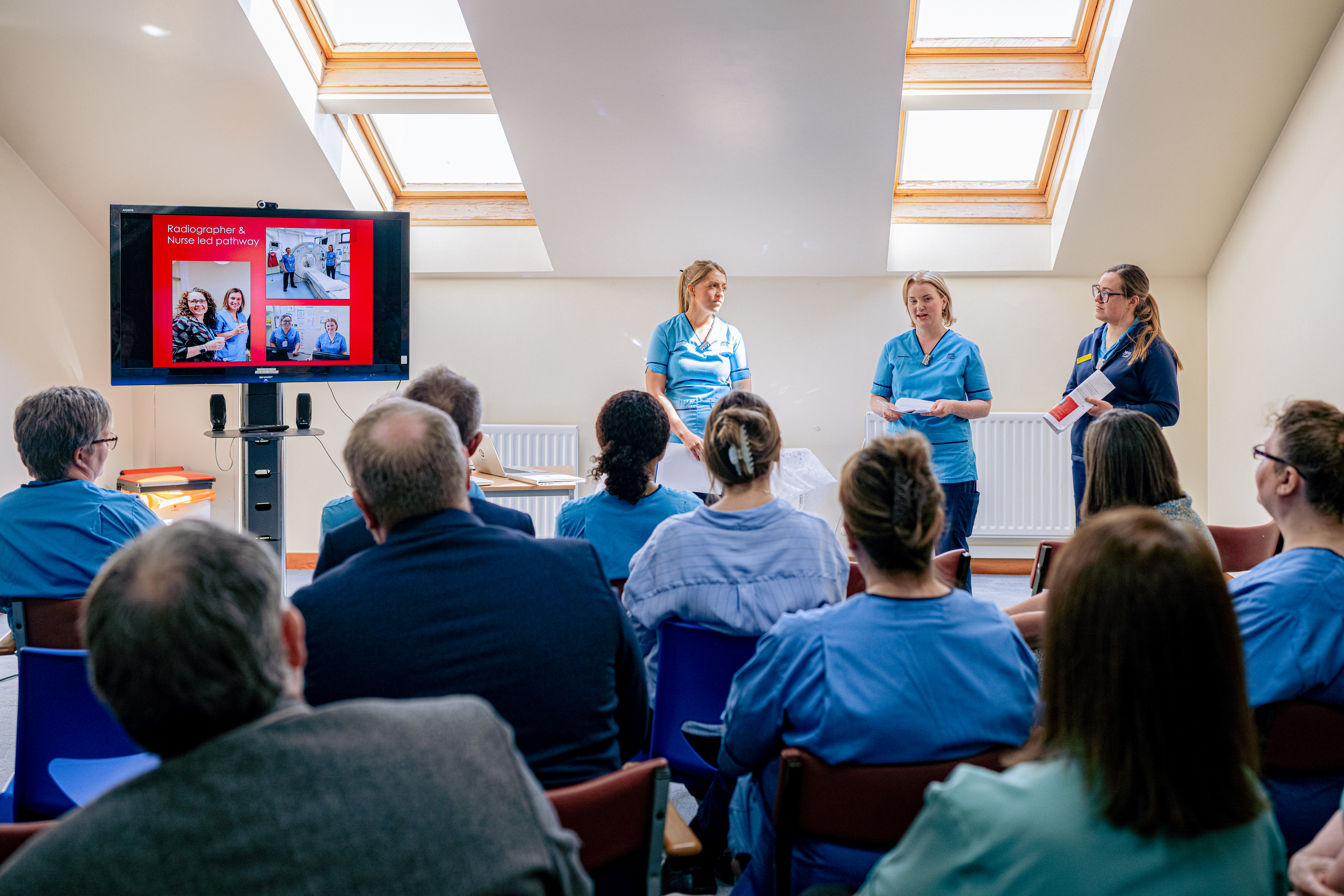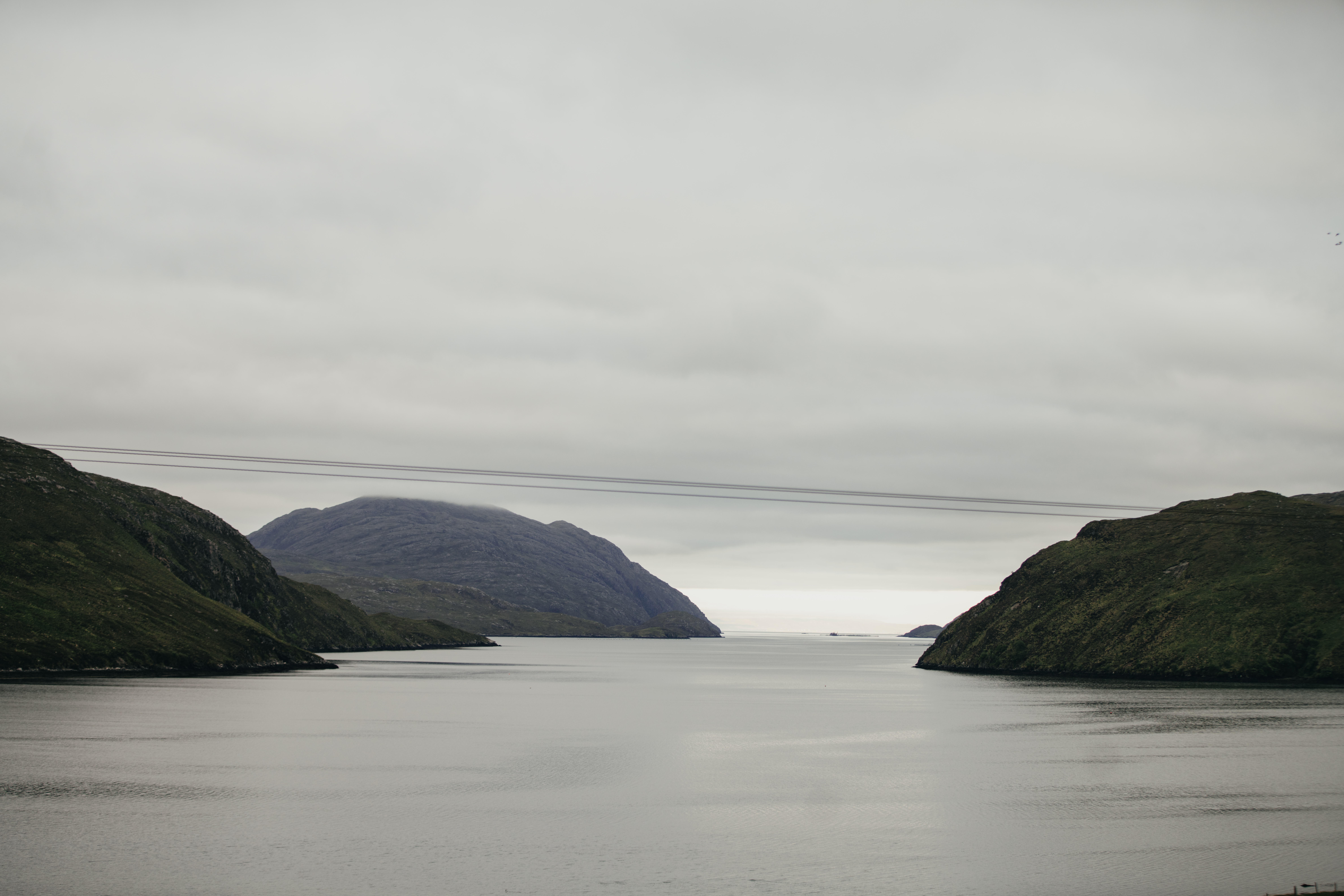
The Outer Hebrides is one of the most isolated parts of Britain.
Located off the north-western coast of Scotland, the region is accessible only by small aeroplane or ferry. Often associated with its vast and beautiful vistas, broad beaches and many a Highland cow, the island chain is also home to Stornoway, the biggest town in the Western Isles.
Stornoway’s population is almost 7,000 and the Outer Hebrides island chain as a whole plays host to around 26,000 people, making healthcare an entirely unique prospect when compared to other parts of the UK. Behind the scenes, the CT coronary angiogram team at the Western Isles Hospital in Stornoway routinely tackles the unusual challenges faced by providing care to the region.
Testament to their dedication, the CT team emerged victorious in no less than three categories at last year’s Radiography Awards, hosted by the SoR at the iconic 4 Hamilton Place venue in London’s Mayfair in November. Unfortunately bad weather, cancelled flights and illness left the team’s worthy recipients unable to attend the event to receive their trophies for Scottish Team of the Year, UK Team of the Year and Patient’s Choice Team of the Year.
In May this year, SoR president Dave Pilborough and president-elect Tom Welton were able to pay the island a visit to present the victors with their well-deserved prizes in an austere ceremony, held at the Western Isles Hospital, part of the NHS Western Isles board (NHSWI).
Synergy tagged along to find out more about how the team managed such an incredible achievement.
‘Working here you have to wear a lot of hats’
Working at the NHSWI has presented the radiography team with seemingly insurmountable barriers to what would elsewhere merely be the normal course of events.
Karen Macleod, one of the radiographers initially involved in establishing the CT coronary angiography service, explains that the staff have developed their roles to be broader to enable them to manage all the normal functions of a radiography department. “The thing with working here is you have to wear a lot of hats,” she says. “We’re radiographers, we help out with the office – it’s a tight-knit team, and you have to help out everyone, so you don’t just do a traditional radiographer job.
“Obviously we’re a remote and rural setting. The main reason we set this up was for the patients. It’s a small team, it’s a small community, and we don’t want our patients to have to travel for something if they don’t have to. We had facilities here with CT, and we were able to set it up quite easily – although we had to have a look at what everyone else was doing to work out a way that we could set it up here for us.”

A national plight
The Outer Hebrides – much like Scotland as a whole – suffers significantly from ischaemic heart diseases. Heart disease in Scotland is predicted to rise by 34 per cent between 2019 and 2043, the biggest increase of all disease groups, and in what was already the country’s biggest killer.
“Diagnostics is such an essential part of this disease, identifying the correct patient pathway,” says Alexandra Maciver, another of the specialist radiographers involved with the service. She says the National Institute for Health and Care Excellence guidelines recommend cardiac CT as a first line of investigation for patients with suspected angina.
Synergy also spoke to Lee Simpson, regional sales manager for CT, MRI and X-ray vascular imaging for Scotland at Canon Medical Systems, which provides the service’s CT scanner. Lee explains the NHSWI has been a “long-standing partner” of the company, not just in CT but also in ultrasound scanning. “Some of the unique challenges have focused around actually getting the equipment to the island,” he says. “We’ve had to drive it up to Ullapool, then run it across on ferries for the installation.
“We’ve actually left some tools on the island so that we’ve got our own service kit there, so when we do send an engineer over we don’t need to come with a lot of our own equipment. It means we can be more reactive to the team here.”
Jane MacDonald, NHSWI radiology manager, adds: “The radiographers rotate duties throughout the rest of the department and have other commitments within the department, so there is a lot of planning and scheduling to ensure the right staff are available at the right time.
“This role development gives us a huge amount of job satisfaction. Particularly as we are using the resources of NHS Scotland to the best value: only the patients that really need to go to Glasgow for an interventional angiogram will have to go.”
Recruitment and retention
The NHSWI manages a remote, rural patient population with an even more rapidly ageing population than mainland Scotland. Issues of recruitment and retention of specialist medical staff have plagued the institution because of a perceived lack of career development, alongside the difficulties of bringing partner and family to the islands for work and schooling.
However, with difficulty comes innovation. Local radiographers at the NHSWI developed the radiographer-led CT coronary angiography (CTCA) and fractional flow reserve (FFR) service, entirely without a locally based radiologist or cardiologist. CTCA involves imaging the coronary arteries using contrast agents to identify symptoms of heart disease, while FFR is a diagnostic technique used to establish the severity of a narrowing of the coronary artery,
By liaising with mainland colleagues for remote radiology support and specialist cardiac input, the team has developed enhanced cardiac scanning skills with safe, effective governance. With support from local nurses and the on-call emergency, as well as sophisticated technological aid from the ‘HeartFlow’ service, the team has been able to massively reduce patient travel to the mainland centre for an invasive angiogram. What once would have been a three-day trip with two overnight stays at significant cost not only to the NHSWI (around £3,000) but also in terms of harmful emissions and psychological impact to patients, is now a home-based service with timely access to diagnostics.
The service opened in 2019 with just two radiographers at the helm, but has since doubled in size. Dave Pilborough, president of the SoR, said at the ceremony in the NHSWI: “Radiographers are all superheroes, and have a way of finding innovative solutions to problems facing them in their locations. Developing such an innovative solution to allow patients to stay here and recover in their own back garden is amazing.
“It gives me immense pleasure to present the Scottish Team of the Year, the Overall UK Team of the Year and the Patient’s Choice Team of the Year to the NHS Western Isles Cardiac CT radiographers.”
Karen recalls how surprised she was to hear they had received not just one but three awards last year. “[It was] very shocking,” she says. “Being so remote, you think that you’re forgotten about and that what you do isn’t recognised on a wider scale. To have that recognition is amazing.”
“We are absolutely thrilled to have been recognised in these awards,” adds Jane. “As a team, we work hard for our patients and we are humbled that our work has been nationally recognised. It was quite a steep learning curve when first training, but the more we did the more confident we became.”

Developing the service
Previously in the NHSWI, the pathway had been to use the “exercise tolerance test”, which assesses the electrical activity of the heart while under physiological stress. However, Alexandra explains, this does not give the most reliable results, and often leaves questions of patient management, particularly when those patients are often then sent to Glasgow for invasive coronary angiograms. These tests, while only minimally invasive, come with risk of palsy, are time consuming, expensive and often include waiting time of between 18 and 20 weeks. “We don’t have the luxury of an onsite cardiologist or cardiac radiologist, so we had to come up with a way to adapt to our setting,” says Alexandra.
In 2019, the NHSWI kickstarted its CTCA service, using Scotland’s national access collaborative principles to improve patient care. Karen and Jane visited foundation trusts NHS Elgin and NHS Borders to receive training for the CTCA service, and all the new circumstances they were likely to encounter. This included technical aspects, such as how to use echocardiography (ECG) for gating and heart rate control, alongside broader aspects, which Alexandra says includes knowing their limitations and how to choose between retrospective and prospective scanning. Retrospective scanning scans the whole cycle of the heart rate to give much more information, but increases the radiation dose. Prospective scanning targets a certain part of the heart rate and means the patient can be given a lower dose.
They have also learned when to make the more difficult choice of whether to scan at all. “This happens,” says Alexandra. “It’s unusual for all of us – we don’t usually take that decision. That was a learning curve, discovering how to explain to patients that we can’t get their heart rate down enough to scan, so they can’t be scanned today.
“Dealing with their disappointment and communicating that decision appropriately has been difficult.”
Alexandra joined the CTCA service later, alongside radiographer Ciara Mackenzie and the cardiac nurses. The nurses advised the team on ECG, ectopics and other “areas that are a bit alien”, says Alexandra.
The service was started for stable angina patients, but the team is now hoping to expand that to unstable patients in a bid to benefit even more people.
Tech supported
What makes NHSWI’s CTCA and FFR service unique is its use of blood flow visualisation technology HeartFlow. Synergy sat down with Nav Sadiq, district manager for HeartFlow in the UK, to understand more about the technology and how it enables better diagnosis and treatment of heart-related pathologies.
Nav explains that, in the past, patients with chest pain had to undergo a number of assessments before needing to attend a cath lab, where a minimally invasive sheath would be entered into an artery in the wrist to undergo assessment for coronary artery disease. Now, cardiac CT can replace this angiogram. Nav says NHS guidance recommends more patients receive cardiac CT than angiogram, because this allows for imaging of the heart and circulatory system’s anatomy.
HeartFlow, he adds, is an additional test for a certain proportion of patients that can indicate if something is functionally significant, or if a part of the anatomy is flow limiting. It works by taking the images generated by the CT scan, running them through an AI and generating a 3D simulation of the anatomy of the area being scanned. It can simulate blood flowing through these sections to understand the fluid dynamics of the heart and circulatory system, helping reporting radiographers identify which parts of the patient’s anatomy might be affecting their cardiac issues.
HeartFlow still maintains a ‘human in the loop’, however, to check all work done by the AI and ensure it is up to par with accurate flow measurements. “If it isn’t, if there’s any tweaks to make, they will make them,” Nav explains. “These tweaks feed back into the system and improve the AI in constant, fractional improvement. Over time, everything becomes tighter and more reliable.”
Ciara adds: “It [HeartFlow] aids in diagnosis of heart disease; it takes the CT data and generates a colour-coded model of the heart and coronary disease, detecting any blockages, flow-limiting cirrhosis, and is the first and only non-invasive test for detecting flow-related disease. It helps physicians more accurately determine what treatments are required.
“It helps us find patients with clinical lesions, reduces the need for patients to travel to the mainland and reduces exposure to radiation and invasive investigations. The patient does not need to undergo an invasive angiogram, with a catheter going into the heart.
“We are the first site in Scotland to use HeartFlow, and it has had a big impact on our patient workflow.”

Impacts and benefits
The impacts of a locally based CT service for the board’s costs, for patients and for the environment have been immeasurable. “The impact on patients has been massive, because patients so appreciate things being done locally,” says Ciara. “Travelling up here, it’s not the easiest place to get to – never mind when you’re not feeling well, or if you’ve just had an invasive test in Glasgow, then you’re returning home.
“If we can reduce that, and they can be in the comfort of their own surroundings, they appreciate it so much.” She believes the unique model could be used elsewhere in Scotland to great effect, especially because the country as a whole has a significantly rural setting.
The CTCA service has enabled the NHSWI to provide full-scan investigation for patients, which makes it the only non-medical led CTCA service in Scotland. “We are quite unique as radiographers having not experienced a normal CTCA service,” Ciara continues. “We’ve been able to adapt quite well to not having the support of an onsite radiologist or cardiologist.
“We do feel it could be implemented elsewhere quite easily, and would increase access for a lot more patients, decrease treatment time for patients and tertiary hospitals and reduce waiting times for coronary angiograms and other functional tests like stress MRI.”
More about NHS Western Isles
NHS Western Isles operates three hospitals, the largest of which is Western Isles Hospital in Stornoway.
Western Isles Hospital opened in 1992 with a range of hospital acute specialities and psychiatry. The hospital also has diagnostic facilities, day hospital (Ambulatory Care Unit), laboratory, allied health professionals and other services.
Find out more about the trust here.
